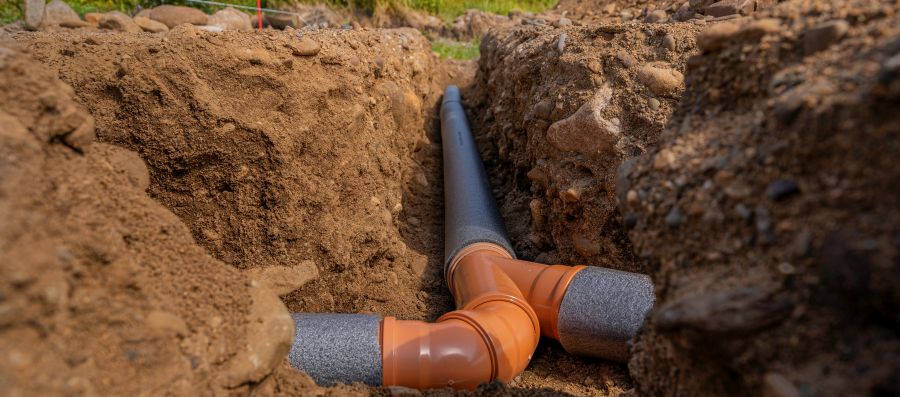
What Depth is a Ground Disturbance?
Understanding Ground Disturbance Requirements in the United States
Ground disturbance in the USA occurs when excavation reaches a depth local authorities deem hazardous for buried utilities. Going beyond this depth in many places necessitates training and notifying the relevant authorities. Failure to adhere to these regulations can result in substantial fines and damages.
Ground Disturbance regulations may be subject to change, so it’s crucial to consult with local authorities and relevant agencies for the most up-to-date information. However, here are some common types of ground disturbance and the relevant jurisdictions:
Construction Excavation:
- Jurisdictions: Typically regulated at the local level, with permits issued by city or county authorities.
- Depth: Varies by location but often involves any excavation that reaches 18 inches or more.
Utility Installation:
- Jurisdictions: Local, state, and federal regulations may apply, depending on the scale and type of utility work.
- Depth: Depths can vary, and regulations may specify different depths for different types of utilities.
Pipeline Installation:
- Jurisdictions: Federal regulations from agencies like the Pipeline and Hazardous Materials Safety Administration (PHMSA) may apply, along with state and local regulations.
- Depth: Generally involves significant excavation, and specific depths may be outlined in regulations.
Mining and Quarrying:
- Jurisdictions: Regulated at the federal level by agencies such as the Mine Safety and Health Administration (MSHA) and at the state level by mining and environmental agencies.
- Depth: Depths can vary based on the type of mining activity.
Environmental Remediation:
- Jurisdictions: Federal, state, and local environmental agencies may regulate activities related to soil and groundwater remediation.
- Depth: Depths may vary depending on the nature of the contamination and the required remediation measures.
Geotechnical Drilling:
- Jurisdictions: State and local regulations may apply, along with any relevant permits from environmental or geological agencies.
- Depth: Depths may vary depending on the purpose of the drilling.

OSHA Ground Disturbance, Excavation and Trenching Standards:
The Occupational Safety and Health Administration (OSHA), plays a pivotal role in establishing and enforcing safety standards across various industries in the United States, including those involving ground disturbance. OSHA’s regulations aim to ensure the well-being of workers and reduce the risks associated with excavation, trenching, and other activities that can disturb the ground.
Competent Person Requirement:
OSHA requires the presence of a competent person on-site during excavation activities. A competent person is someone with the knowledge and experience to identify existing and predictable hazards or working conditions that are hazardous, unsanitary, or dangerous to employees. This person is responsible for implementing necessary safety measures and has the authority to take prompt corrective action to eliminate hazards.
Protective Systems:
OSHA mandates the use of protective systems to prevent cave-ins during excavation work. These systems include shoring, sloping, and shielding, and they must be designed, installed, and inspected by a competent person. The goal is to maintain the stability of the excavation and protect workers from the dangers of a collapse.
Inspections:
OSHA requires regular inspections of excavations, conducted by a competent person. Daily inspections are essential to identify and address any potential hazards promptly. Additionally, inspections are required after events like rainstorms that could affect the stability of the excavation site.
Access and Egress:
Proper access and egress are crucial for the safety of workers in excavations. OSHA standards stipulate that ladders, steps, ramps, or other safe means of exit must be provided when employees enter excavations that are four feet or deeper.
Warning Systems:
Where mobile equipment is operated adjacent to an excavation site, OSHA may require the use of warning systems, such as barricades or hand signals, to alert equipment operators and workers to the presence of the excavation.
Hazardous Atmospheres:
OSHA standards address the potential for hazardous atmospheres within excavations. Employers must implement measures to control atmospheric conditions and provide necessary protective equipment, such as ventilation systems or respiratory protection, to safeguard workers.
Training Requirements:
OSHA emphasizes the importance of training for workers involved in excavation activities. Workers must be knowledgeable about the specific hazards associated with their work and understand the safety measures in place to mitigate these risks.
Emergency Response:
OSHA requires employers to have procedures in place for responding to emergencies in excavation sites. This includes having a means of summoning emergency assistance and establishing rescue procedures to retrieve workers in the event of a collapse or other emergencies.
It’s essential for employers and workers involved in ground disturbance activities to familiarize themselves with OSHA’s excavation and trenching standards, as they are designed to create a safe and secure work environment. Regular training, ongoing communication, and strict adherence to these standards contribute to the overall safety of excavation operations.

Ground Disturbance State Requirements in the United States:
Ground disturbance training requirements in the U.S. vary by state and municipality. For instance, in Texas, excavation work exceeding 16 inches requires workers to undergo excavation safety training. Meanwhile, in California, excavation work surpassing 24 inches necessitates trenching and excavation safety training.
Colorado:
In Colorado, excavation work exceeding 18 inches requires workers to undergo excavation safety training covering topics such as soil classification, protective systems, and excavation site inspections.
Massachusetts:
In Massachusetts, excavation work surpassing 4 feet mandates workers to receive trenching and excavation safety training covering topics like soil classification, protective systems, and hazard recognition.
New York:
In New York, excavation work going beyond 4 feet necessitates workers to undergo excavation and trenching safety training, covering soil analysis, protective systems, and emergency response procedures.
Texas:
In Texas, any excavation work delving deeper than 16 inches requires workers to undergo excavation safety training. This training ensures that individuals are well-versed in the proper procedures for digging at significant depths, emphasizing safety and hazard awareness.
California Division of Occupational Safety and Health (Cal/OSHA):
In addition to California’s state requirements, Cal/OSHA has its excavation and trenching safety standards, obligating employers to provide workers with excavation and trenching safety training and ensure compliance with safe work practices during excavation.






























